San Francisco, CA Pollen and Allergy Report for Summer 2023
Pollen Allergy Trends in San Francisco, CA
When is pollen lowest in San Francisco, CA?

February
Lowest month total PPM
Avg. PPM
When is pollen highest in San Francisco, CA?

March
Highest month total PPM
Avg. PPM
How does pollen in San Francisco, CA compare to California?
San Francisco has a higher average PPM than the state of California.
San Francisco yearly avg PPM:
California yearly avg PPM:
How does pollen in San Francisco, CA compare to the USA?
San Francisco has a higher average PPM than the USA.
San Francisco yearly avg PPM:
USA yearly avg PPM:
Is pollen worse this year in San Francisco, CA?
Spring 2023 was worse than spring 2022.
Spring 2023 PPM:
Spring 2022 PPM:
Average PPM in San Francisco, CA
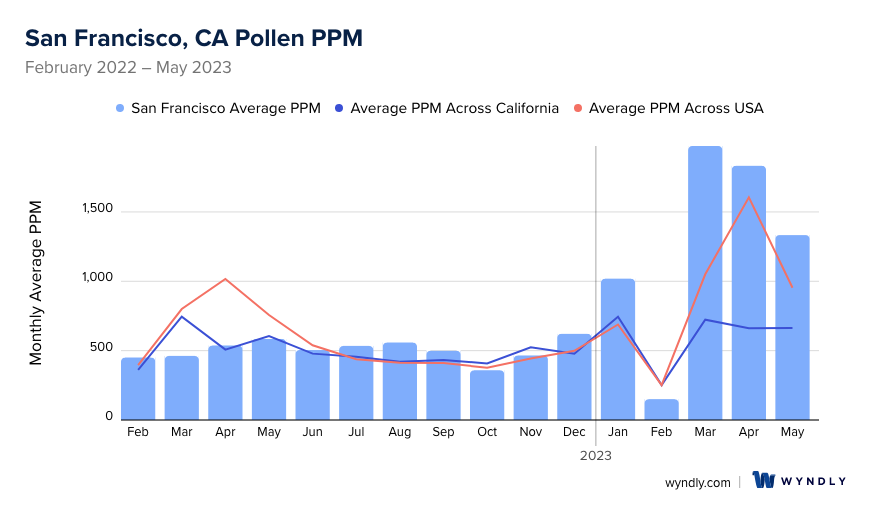
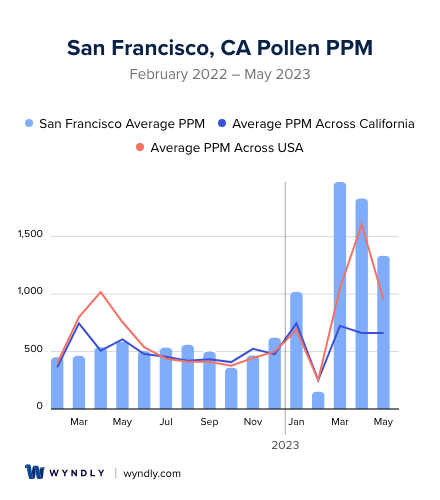
San Francisco, CA Pollen and Allergy Breakdown by Month
Grass
When is grass pollen highest in San Francisco, CA?
May has the highest grass pollen in San Francisco, CA with an average PPM of
When is grass pollen lowest in San Francisco, CA?
December has the lowest grass pollen in San Francisco, CA with an average PPM of
Tree
When is tree pollen highest in San Francisco, CA?
March has the highest tree pollen in San Francisco, CA with an average PPM of
When is tree pollen lowest in San Francisco, CA?
September has the lowest tree pollen in San Francisco, CA with an average PPM of
Weed
When is weed pollen highest in San Francisco, CA?
July has the highest weed pollen in San Francisco, CA with an average PPM of
When is weed pollen lowest in San Francisco, CA?
February has the lowest weed pollen in San Francisco, CA with an average PPM of
San Francisco, CA Pollen Monthly Breakdown by Pollen Type
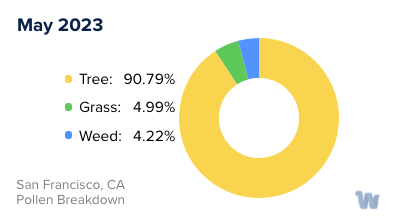
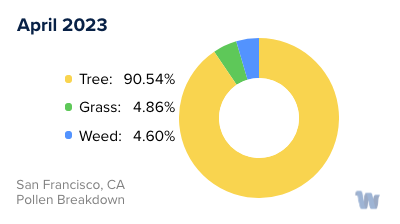
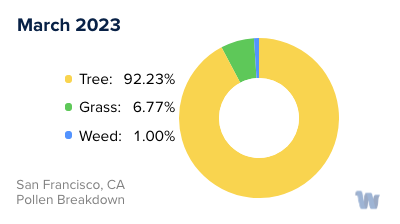
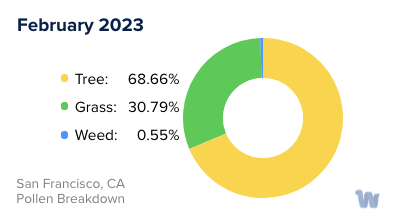
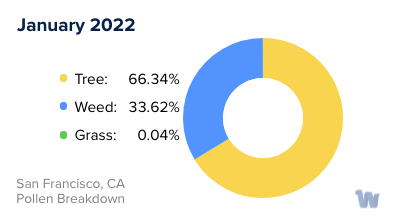
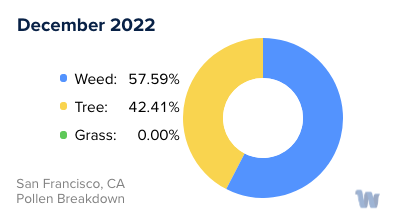
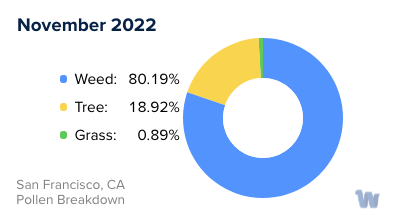
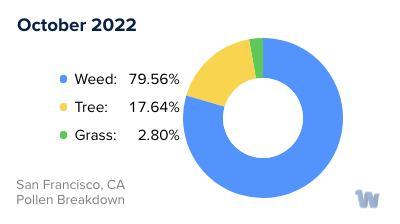
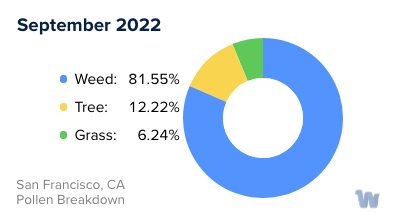

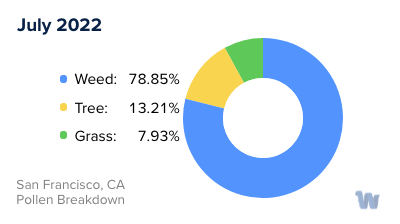
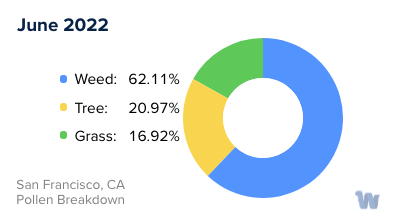
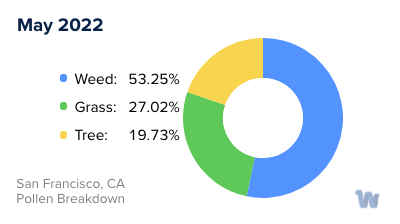
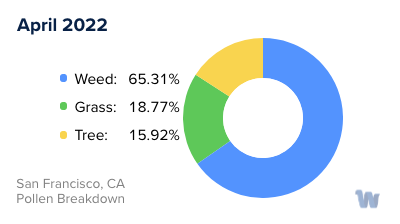
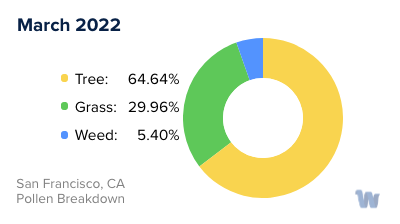

Pollen and Hay Fever in San Francisco, CA
When it comes to living in San Francisco, California, the city's mild climate and breathtaking natural beauty are undeniable. However, for those susceptible to pollen allergies, sometimes referred to as hay fever, the city's diverse flora can pose certain challenges.
Pollen allergies are triggered when our immune systems react to certain types of pollen as if they were harmful invaders. The primary culprits in San Francisco are tree, grass, and weed pollens, each prevalent in different seasons.
Starting with tree pollens, the city's extensive variety of trees become a concern, particularly in the late winter and early spring. Oaks, cedars, and pines, all common throughout the city and its surrounding areas, release their pollens into the air, often carried by the famous San Francisco breeze. The iconic eucalyptus trees, originally native to Australia but now scattered across the city, also contribute to the pollen count during this time.
As spring turns into summer, the grass pollen season begins. Timothy grass, rye grass, and Bermuda grass are common sources of allergenic pollen. Though less prevalent in the city proper, these grasses are found in the broader Bay Area and their pollens can be carried into the city by the wind.
Finally, as summer gives way to fall, weed pollens become the main concern. Ragweed, while not as common in San Francisco as in other parts of the country, can still be a source of allergies for some. Other weeds like sagebrush and nettle can also release allergenic pollen.
It's also important to remember that San Francisco's unique microclimates can cause variation in pollen levels. For example, an area shrouded in fog might have lower pollen levels compared to a sunny hilltop.
While it's virtually impossible to completely avoid pollen exposure in San Francisco, understanding the types of pollen and their seasons can help residents and visitors anticipate and navigate the city's allergy landscape. Knowledge is power, and being informed about these pollen sources is the first step in managing and living comfortably with pollen allergies in San Francisco.


